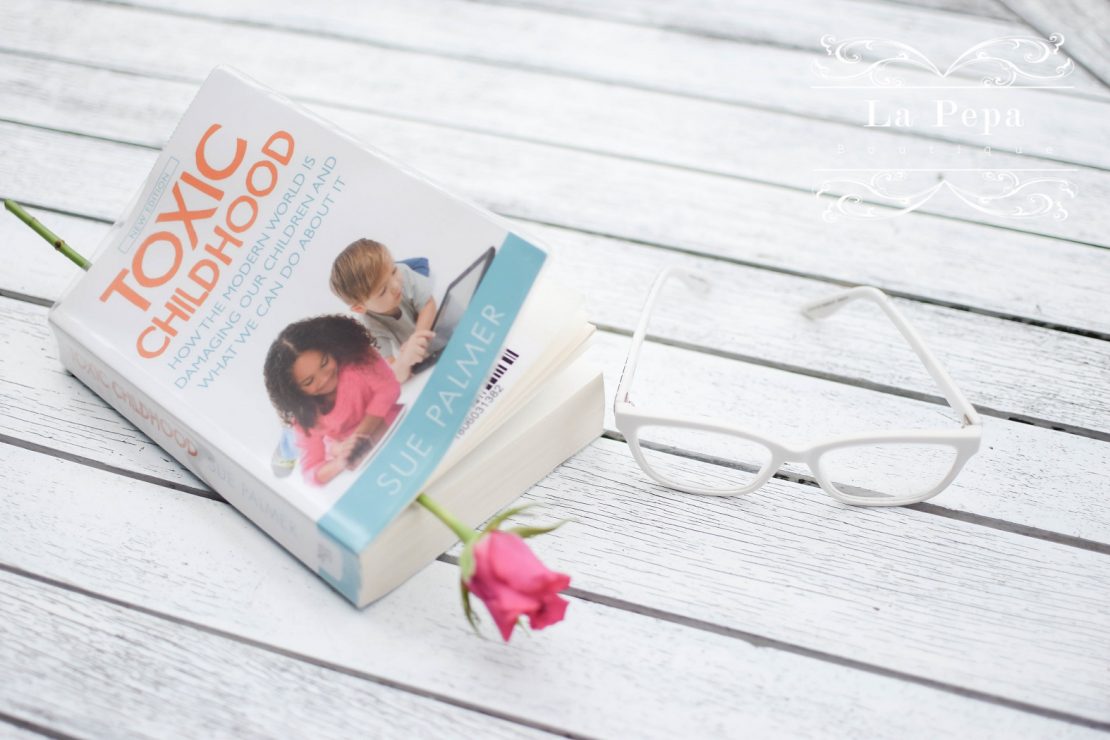Today I am sharing my thoughts on a book which really impressed me. Don’t get deceived by the book title “Toxic Childhood. How the modern world is damaging our children and what we can do about it” – this book is definitely not an invitation to raise kids in old style! The author is analysing modern issues that are very interesting to me, such as the mental health of modern children, the impact of the rapid digital media, poor diet, aggressive marketing, consumerism, the decline of the free-range kids, lack of exercise, tired families, the educational rat race and many other toxic factors affecting today’s children.
Šiandien dalinuosi mintimis apie knygą, kuri tikrai stipriai mane sužavėjo. Neapsigaukite perskaitę knygos pavadinimą “Nuodinga Vaikystė. Kaip šiuolaikinis pasaulis žaloja mūsų vaikus ir ką galime dėl to padaryti” – ši knyga tikrai nėra kvietimas auginti vaikus remiantis senaisiais metodais. Knygos autorė analizuoja modernias problemas, kurios mane labai domina, tokias kaip psichologinė vaikų sveikata, marketingas, beprotišku tempu besivystanti skaitmeninė medija, agresyvus marketingas, prasta mityba, didelis vartojimas, pavargę šeimos, prastėjančios sąlygos nevaržomai vaikystei lauke, mažėjantis judėjimas, edukacinės lenktynės ir kiti nuodingi faktoriai, kurie įtakoja šiuolaikinę vaikystę.

Quotation from the book / Ištrauka iš knygos
“She was standing on the steps of the Uffizi Gallery in Florence – a short, dark-haired girl, slightly overweight, sulkily licking an ice cream. I guessed from her face she was no more than ten years old, but the angry scowl and scrunch self-consciousness looked more like a teenager, wracked with adolescent angst. <…?> And across her little girl’s chest was printed her message to the world: “I ❤ my attitude problem”.
In the building behind her were some of western civilisation’s greatest treasures – paintings by Botticelli, Leonardo, Michelangelo -with presumably her parents dragged her across Europe (maybe across the world) to see. She clearly wasn’t remotely interested. <…> Her feelings about life were written all over her: anger. self-obsession, boredom, lack of engagement – the multiple trademarks of the brat.
Poor child. Poor parents. Poor western civilisation – indeed the whole of the developed world <…> In a global culture whose citizens are wealthier, healthier and more privileged than ever in human history, children grow unhappier every year. From the disgruntled and discontented to the depressed and dysfunctional, we seem to be raising a generation with nothing to love but its attitude problem.”

It is the best of times; it is the worst of times. We live in a world of comfort, convenience and promise but it’s not the best world for children. So what’s going wrong? An author believes there isn’t one simple answer. It’s a complex cultural problem, linked to the incredible speed of human progress and increasingly competitive consumer capitalism. The book is packed with interesting insights, presents up-to-date researches on various topics. After each topic, an author provides suggestions on detoxifying childhood – from babies to teenagers. It’s very clear, that an author has a really great knowledge and is passionate about the topic she is researching and sharing her knowledge with worried parents. An author touches another topic, I am very interested in – the way mass media affect children’s lives, through the influence of marketing on their play, friendships, family relationships and culture of childhood in general. But I will share a separate post on that!
All in all, this book is an absolute treasure and I would recommend it to read for every single mother, who wants to understand what is happening with our children today and how to raise them healthy, happy and itelligent.
Dabar yra patys geriausi, ir patys blogiausi laikai. Gyvename komforto, patogumo ir daug žadančiame pasaulyje, tačiau šis pasaulis nėra pats geriausias mūsų vaikams. Tai kas gi blogai? Autorės manymu, nėra vieno paprasto atsakymo. Tai yra kompleksinė kultūros problema, susijusi su neįtikėtinu žmonijos progreso greičiu ir vis konkurencingesnio vartojimo. Knygoje gausu įdomių, priverčiančių susimąstyti įžvalgų, kurios paremtos naujaisiais tyrimais. Skaitant knygą tikrai jaučiasi, kad autorė daug gilinosi ir turi didelį žinių bagažą nagrinėjama problema. Beje, po kiekvienos temos autorė dalinasi patarimais, kaip “sumažinti vaikystės nuodingumą” ir šie patarimai skirti visiems vaikams, nuo kūdikio iki paauglio. Autorė paliečia ir dar vieną, mane šiuo metu labai dominančią temą – apie tai, kaip medija įtakoja vaikų gyvenimus, nuo žaidimų iki požiūrio į draugystę, šeimos santykius ir vaikystės kultūrą apskritai. Tačiau apie tai, plačiau pakalbėsiu atskirame įraše, nes tema tikrai to verta.
Pabaigai pasakysiu tik tiek, kad ši knyga yra visiškas lobis ir tikrai nuoširdžiai rekomenduoju ją paskaityti visoms mamoms, kurios nori suprasti, kad vyksta su mūsų vaikų pasauliais šiandien ir kaip juos užauginti sveikus, laimingus ir protingus. Daug analizuoti knygos ir nereikia – paskaitykite pačios, bus tikrai įdomu.

You can find this book in your local library (as I did!), buy used one on eBay or a new one here.
Disclaimer. Please note, I have not been paid for this post nor been given a book in exchange. As always, I have shared my honest opinion.
Love,
E.
Love,
E.








